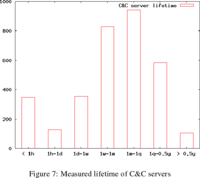Brooks extended:
Each thing we are trying to push for in secure coding these days requires mastery, Cardspace, static analysis, threat modeling, web service security, and friends are very deep individual domains, and when applied to an enterprise they get wide as well. Let me underline that – to deploy any of the current cutting edge stuff in software security at scale, requires technical depth and deployment width. This automatically limits your resource pool of who can deliver this stuff.
So what I have seen work well is using a decentralized, specialist team approach with a very specific agenda and goals. Note the team can be very small, 2 or 3 people even if they are empowered.
— Go Wide and Deep, Incrementally, Gunnar Peterson, 1 Raindrop, 10 JJan 2008
Not only can’t you make a late project on time by throwing people at it, you can’t really make a project secure by throwing people at it.
-jsq



